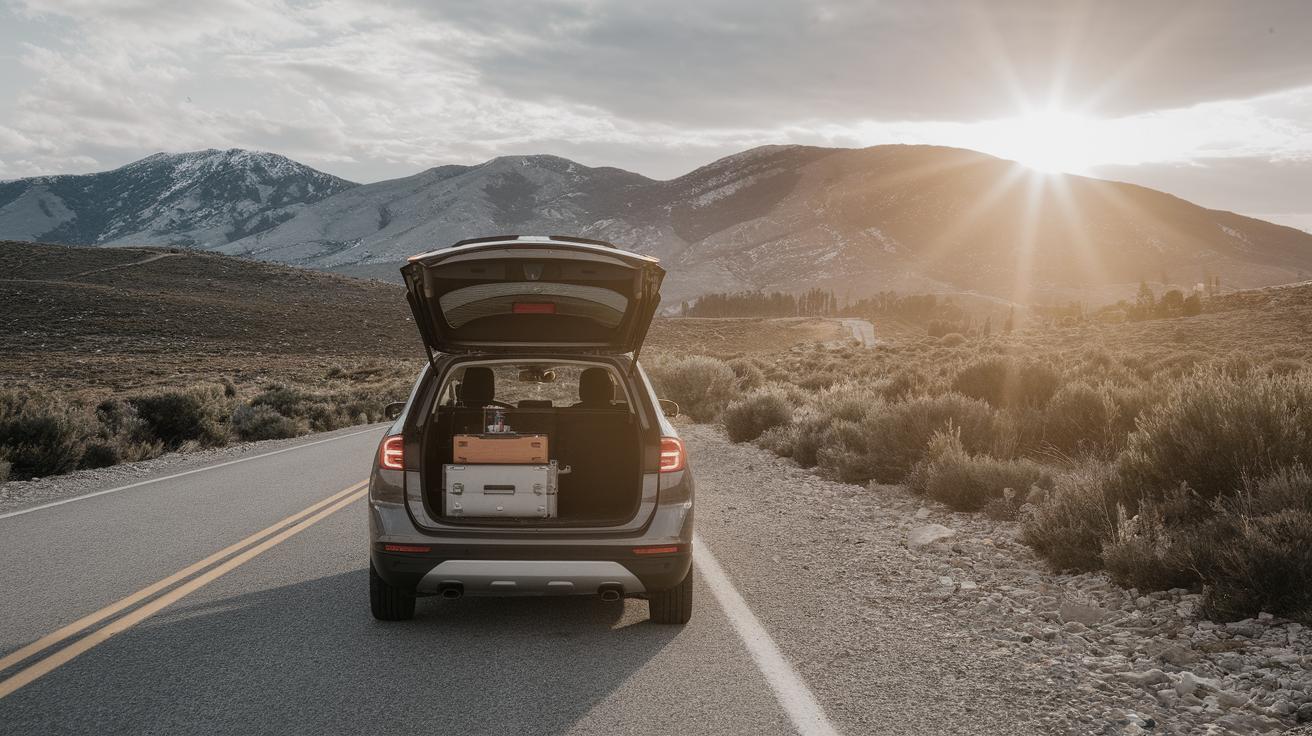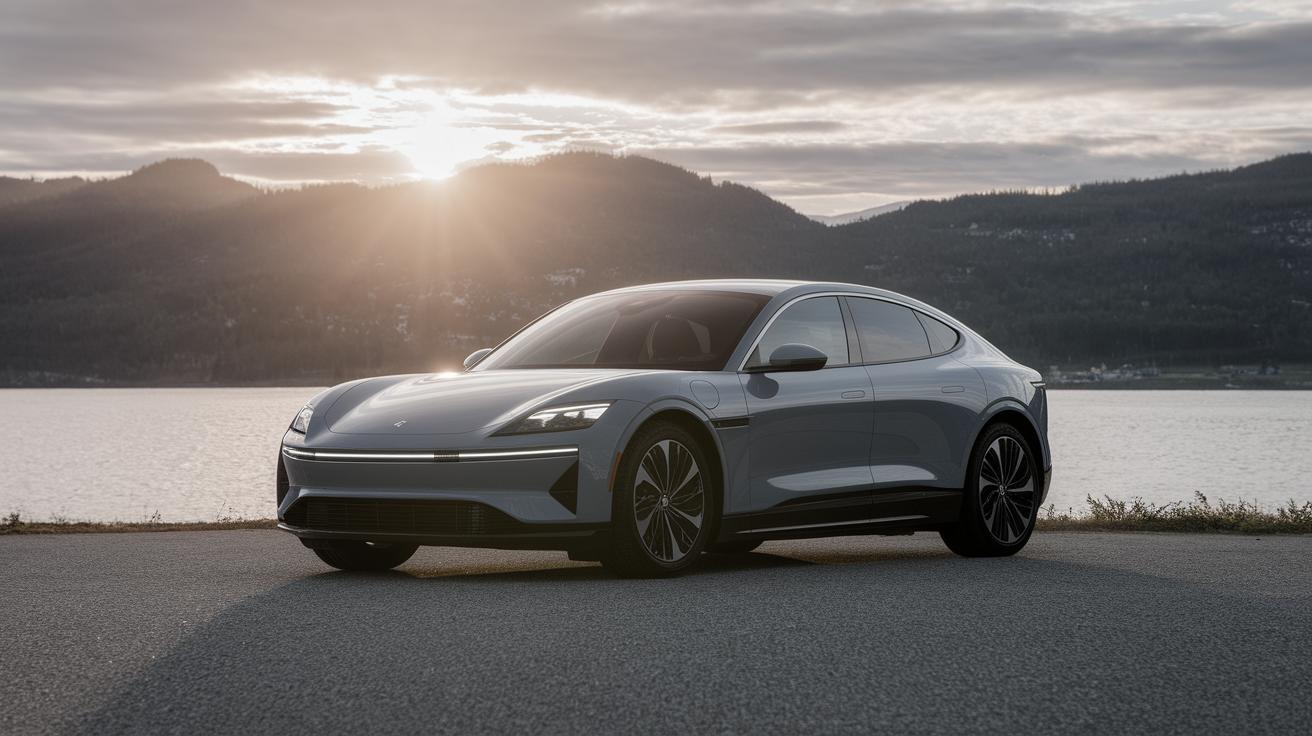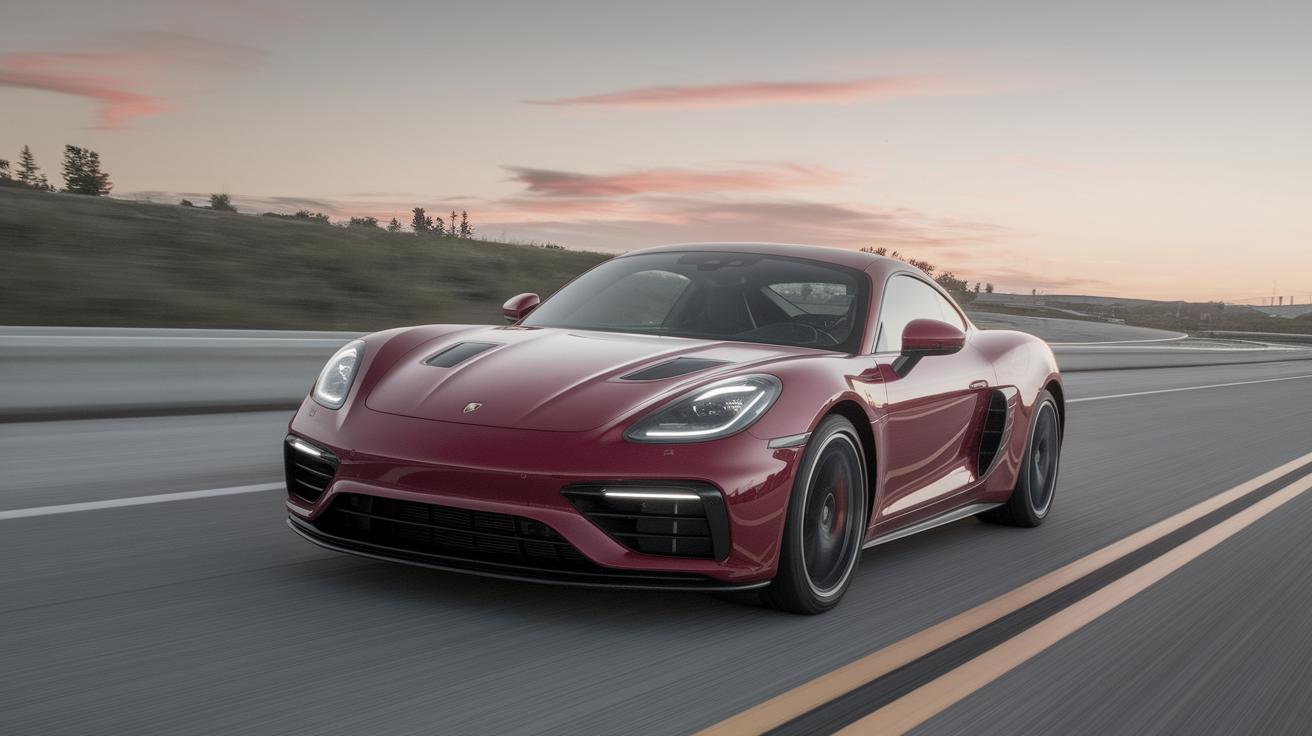Best Car Accessories for Road Trips
Embarking on a road trip? Ensuring you have the right car accessories can elevate your journey from good to great. Whether it’s packing efficiently, staying entertained, or ensuring you’re prepared for every scenario, each aspect matters. This guide highlights essential accessories that enhance your road-tripping experience, focusing on categories like stowing gear, driver’s comfort, refreshment options, and safety. From top-of-the-line cargo solutions to must-have health supplies, we cover everything for a stress-free adventure on wheels. Prepare your checklist, buckle up, and read on for an accessory round-up that promises comfort, convenience, and peace of mind throughout your travels!
The Research
In the vast world of car accessories, determining the essential items for a road trip can be daunting. Conducting thorough research to understand the demands of long drives and varied terrains is crucial. We’ve focused on picking accessories that enhance safety, comfort, and overall experience.
Our selections are based on reviews from experienced travelers and insights from industry experts. Whether it’s prioritizing safety with a reliable GPS or ensuring comfort with quality pillows, each item on this list has been thoughtfully chosen to provide maximum value.
Stowing Your Gear
Cargo Boxes
Yakima SkyBox NX XL
The Yakima SkyBox NX XL is a popular choice for those needing extra storage without compromising aerodynamics. Known for its sleek design and secure fit, it offers ample space for all your essentials and easily attaches to most roof racks.
The Best Cargo Box
Roof Straps
Roof straps are essential for ensuring your cargo stays securely in place when traveling. These durable straps are perfect for tying down bulky items on your car’s roof, making them indispensable for any long journey.
Keeper Endless Loop Ratchet Tie-Down
The Keeper Endless Loop Ratchet Tie-Down ensures a tight grip on your cargo, preventing shifts during transportation. Its robust design and easy mechanism make it a preferred choice for securing rooftop loads.
The Best Ratcheting Straps
NRS 1″ HD Tie-Down Straps
NRS 1″ HD Tie-Down Straps are favored for their reliability and ease of use. With a robust construction and a simple buckling mechanism, these straps serve as an excellent solution for securing your equipment.
The Best Cam Straps
Thule Quick Loop Strap 530
Thule’s Quick Loop Strap 530 is designed for ease of use and strength. Ideal for smaller cars, these straps are user-friendly and provide excellent security for lightweight cargo.
For Smaller Cars
Car accessories like the Thule Quick Loop Strap 530 are perfect for smaller vehicles where space is at a premium. They allow users to maximize their packing efficiency without sacrificing security or convenience.
In the Driver’s Seat
Sunglasses
Maui Jim
Sunglasses are a must-have for any road trip, providing essential protection from sun glare. Maui Jim offers polarized lenses for optimal clarity and comfort, ensuring your eyes are shielded and your driving experience is enhanced.
The Best Sunglasses
Smartphone Mount
iOttie iTap 3 Magnetic Dash & Windshield Mount
The iOttie iTap 3 Magnetic Dash & Windshield Mount is an excellent companion for those relying on smartphones for navigation. With its magnetic grip and versatile placement options, it keeps your phone accessible and secure.
The Best Dash or Windshield Car Mount
iOttie iTap 3 Magnetic Air Vent Mount
This magnetic mount is perfect for those preferring to keep their smartphone at eye level. Its compact design and powerful magnet ensure that your device remains firmly in place during your journey.
The Best Vent Car Mount
iOttie iTap 2 Magnetic CD Slot Mount
This mount is a game-changer for vehicles with unused CD slots, offering a unique and stable mounting point. It ensures that your device is easily accessible while driving.
The Best CD-Slot Car Mount
iOttie Easy One Touch Wireless 2 Dash & Windshield Mount
Combining wireless charging with secure mounting, this iOttie solution keeps your smartphone charged and accessible without the clutter of cables. It’s perfect for travelers who rely on their devices.
Best Mount for Charging a Smartphone on a Dash or Windshield
iOttie Easy One Touch Wireless 2 Air Vent & CD Slot Mount
This mount offers versatility by allowing installation in either the air vent or CD slot, providing flexible charging solutions for longer journeys.
Rain-repellent Coatings
Rain-X Original Glass Water Repellent
Cheap but Short-lived Repellent
Rain-X is known for providing a temporary but effective coating that repels water, ensuring better visibility during rain. It’s an affordable choice for short-term use.
Aquapel Glass Treatment
Long-lasting but Pricey Repellent
For those willing to invest a bit more, Aquapel offers a long-lasting solution for water-repelling glass treatments, enhancing safety and visibility in adverse weather.
Ice Scraper and Snow Brush
Hopkins SubZero 80037
No winter road trip is complete without a reliable ice scraper and snow brush. The Hopkins SubZero 80037 is highly effective against frost and snow accumulation, simplifying morning departures.
The Best Ice Scraper and Snow Brush
Paper Road Atlas
Rand McNally Road Atlas
While GPS units dominate, a classic road atlas can be a lifesaver in areas with spotty satellite reception. The Rand McNally Atlas offers detailed maps for navigating unexpected detours.
The Best Road Atlas
GPS Unit
Garmin DriveSmart 55
A reliable GPS unit like the Garmin DriveSmart 55 provides up-to-date directions and alerts for road conditions. Its intuitive interface ensures you’re always on the right path.
The Best Car GPS
Health and Cleaning Supplies
Body Wipes
Sea to Summit Wilderness Wipes
Body wipes can revitalize you on a long journey without the need for a shower. Sea to Summit Wilderness Wipes are gentle, efficient, and perfect for a quick refresh.
The Best Body Wipes
Surface Wipes
Clorox Disinfecting Wipes
Maintaining cleanliness on the go is crucial, especially in shared spaces. Clorox wipes are dependable for eliminating germs and surfaces bacteria, ensuring a clean road-trip environment.
The Best Disinfecting Wipes
Face Masks
Stain Remover
Shout Wipe & Go Instant Stain Remover Wipes
Spills are inevitable, but they don’t have to ruin your journey. Shout’s instant stain remover wipes tackle mishaps promptly, keeping your clothes in great condition.
The Best Stain Remover
Hand Lotion
Native Moisturizing Lotion
Long drives can leave your skin feeling dry, but Native’s Moisturizing Lotion offers rehydration with natural ingredients, making it ideal for everyday use.
The Best Moisturizing Lotion for Everyday Use
Staying Comfortable
Folding Blanket
Nemo Victory Picnic Blanket (XL)
A folding blanket like the Nemo Victory XL provides comfort and warmth, whether you’re at a rest stop or settling in for a night under the stars. Its portable design means it’s easy to carry and store.
Comfortable and Easy to Carry
Travel Pillow
Therm-a-Rest Compressible Pillow Cinch
Travel pillows ensure restful napping during pit stops. Therm-a-Rest’s Compressible Pillow Cinch provides ample support and packs down for easy storage.
The Best Travel Pillow
Sleep Mask
Nidra Deep Rest Eye Mask
Achieving quality sleep is essential on long journeys, and the Nidra Deep Rest Eye Mask offers total darkness and comfort, essential for rest stops.
The Best Sleep Mask
Rumpl Original Puffy Blanket
These blankets bring the coziness of home wherever you go. The Rumpl Original Puffy Blanket insulates effectively and offers a moisture-resistant exterior for added utility.
The Best Puffy Blanket
Van Camping Mattress
Hest Sleep System
A good night’s sleep is critical for road safety. The Hest Sleep System provides unbeatable comfort for in-vehicle slumber, ensuring you wake up refreshed and ready to continue your trip.
The Best Vehicle Camping Mattress
Pee Funnel
Tinkle Belle Female Urination Device
For women, devices like the Tinkle Belle ensure convenience and hygiene on long, remote stretches where facilities are scarce. It’s compact and simple to use.
The Best Pee Funnel
Windshield Protector and Sunshade
A1 210T Fabric Sunshade
Keeping your car cool can be a challenge, but the A1 210T Fabric Sunshade provides excellent coverage to block out UV rays and minimize internal temperature rise.
The Best Windshield Shade
WeatherTech SunShade
A Custom-fitted, Maximum-protection Shade
For a tailored fit, WeatherTech’s SunShade offers maximum sun protection. Fitting snugly within your car’s contours, it ensures comprehensive coverage.
Passenger Window UV Protector and Shade
Britax EZ-Cling Window Shades
Protect your passengers from glare and heat with Britax EZ-Cling Shades. Ideal for children, these shades attach easily and provide significant UV protection.
The Best Passenger Shade
Portable Extending Shade
MoonShade
Boost your coverage with the MoonShade extending shade, perfect for creating a larger sheltered area when parked for a meal or rest.
Shade Extension
Refreshments
Coolers
RTIC Soft Pack Cooler 20 Can
Keeping beverages cool and refreshments fresh is essential for comfort. RTIC’s soft cooler offers excellent insulating properties while being portable and compact.
Best Soft Cooler
RTIC 52 QT Ultra-Light Cooler
For heavier-duty cooling needs, the RTIC 52 QT Cooler provides robust insulation and build quality, making it ideal for lengthy excursions.
Best for Casual Adventures
Water Bottles
BrüMate Rotera (25 ounces)
Hydration is key on the road, and BrüMate’s Rotera bottle keeps your drinks at the desired temperature for extended periods, ensuring you’re refreshed.
Best Water Bottle for Road Trips
Owala FreeSip Sway (30 ounces)
The Owala FreeSip features a unique lid and ergonomic design for easy drinking while driving, keeping you hydrated and focused.
Another Great Bottle for Road Trips
Contigo West Loop 3.0
Coffee enthusiasts will appreciate the Contigo West Loop 3.0, a well-insulated travel mug perfect for sipping hot beverages safely on the go.
Best Travel Mug for Road Trips
Entertainment
Bestek 300W Power Inverter
Powering devices on the go can be challenging without an inverter. The Bestek 300W provides a robust solution for charging simple electronics, ensuring they’re ready when needed.
The Best Inverter for Simple Devices
Jackery Explorer 300
For more extensive power needs, the Jackery Explorer 300 offers significant capacity and versatility, suitable for powering multiple devices or short-term camping setups.
Best for Short-Term Use
Nekteck PD 45W Type-C Car Charger
This fast-charging car charger is essential for tech-savvy travelers, ensuring your devices stay charged and ready with its high-speed capabilities.
The Best Car Charger
Bluetooth Kit
Besign BK01 Bluetooth Car Kit
Incorporating Bluetooth into older vehicles is simple with the Besign BK01. It seamlessly integrates connectivity for calls and music streaming while driving.
Best Bluetooth Adapter for Cars with an Aux-in Jack
iPad Headrest Mount
Arkon Center Extension Car Headrest Tablet Mount
For backseat entertainment, the Arkon Tablet Mount caters to travelers wanting to enjoy movies or games hands-free, accommodating multiple viewers.
For Multiple Viewers
Instant Camera
Fujifilm Instax Mini 12
Capture memories on the go with the Fujifilm Instax Mini 12. This instant camera is budget-friendly, easy to use, and ensures you’re never without a quick photo op.
A Cheap, Cute Instant Camera
Fujifilm Instax Mini Film (Twin Pack)
Keep plenty of Fuji Instax Mini film on hand to ensure those spontaneous moments are fully captured and shared.
Instax Mini Film
Travel Game
The Question Guys Chat Pack: Fun Questions to Spark Conversations
Bring a hint of fun to long hours on the road with travel games such as The Question Guys Chat Pack. They can stimulate engaging conversations, breaking the silence and keeping things lively.
The Best Silence-breaker
Detours
Binoculars
Athlon Optics Midas ED
Nature enthusiasts will treasure the Athlon Optics Midas ED binoculars. With exceptional clarity and brightness, they enhance scenic detours, offering a closer look at wildlife and landscapes.
The Best Binoculars for Nearly Everyone
Stowable Tote or Daypack
Sea to Summit Ultra-Sil Day Pack
The Sea to Summit Ultra-Sil Day Pack’s innovation lies in its collapsibility, providing a spacious pack when needed and small storage when not. It’s perfect for trailhead excursions.
A Pack That Won’t Crowd Your Trunk
Sunscreen
Blue Lizard Sensitive Mineral Sunscreen SPF 50+
Protecting your skin from harmful UV rays is vital during prolonged exposure, and Blue Lizard’s mineral sunscreen offers broad-spectrum protection with safe ingredients.
An Easy-to-spread Physical Sunscreen
Banana Boat Light As Air SPF 50+
This lightweight chemical sunscreen offers broad-spectrum protection without leaving a heavy residue, ensuring comfortable use for all skin types.
A Lightweight, Oxybenzone-free Chemical Sunscreen
Just in Case
First-aid Kit
First Aid Only 299 Piece All-Purpose First Aid Kit (FAO-442)
A comprehensive first-aid kit like the First Aid Only 299 piece set is indispensable, offering crucial support in addressing minor injuries or accidents during road trips.
All the Basics
Snow Shovel
Voilé Telepro Mini Avalanche Shovel
The Voilé Telepro Mini Avalanche Shovel provides excellent snow-clearing capabilities while being compact enough to store in your trunk. Perfect for unexpected winter situations.
The Best Car Shovel
Tire Gauge
Accu-Gage RRA60X
Tire maintenance is critical for safety and fuel efficiency. The Accu-Gage RRA60X provides precise pressure information ensuring your tires are properly inflated.
The Best Tire Gauge We’ve Found
Portable Jump Starter
Weego Jump Starter 44s
Avoid being left stranded with the Weego Jump Starter 44s. This compact power bank can jump-start vehicles, providing peace of mind against unexpected battery failures.
Staff-favorite Jump Starter
Jumper Cables
Lifeline AAA Heavy Duty 16-foot 6 Gauge Booster Cables
For traditionalists, Lifeline AAA cables offer robust and reliable support, vital companions alongside power banks to cover all battery scenarios.
The Best Cable Option
Tool Roll
Decked x BoxoUSA Tool Bag with Tool Roll
Equip yourself for minor repairs with the Decked x BoxoUSA tool roll, providing convenient and organized access to essential tools on the go.
For the At-home Mechanic
Headlamp
Black Diamond Spot 400 Headlamp
From late-night tire changes to impromptu hikes, a quality headlamp like Black Diamond’s Spot 400 is indispensable for hands-free illumination.
The Best Headlamp
Flare Alternative
StonePoint LED Emergency Beacon
LED emergency beacons offer a safer, more sustainable alternative to traditional flares, providing effective visibility in roadside emergencies.
The Best Emergency Beacon
Multi-tool
Leatherman Skeletool CX
The Leatherman Skeletool CX is a versatile tool integrating pliers, screwdrivers, and more, addressing various mechanical needs on the road.
The Best Multi-tool
Duct Tape
Duck Brand Max Strength Duct Tape
Useful for quick fixes, Duck Brand duct tape is reliable for addressing emergency patch-ups, reinforcing repairs, and myriad potential uses.
The Best Duct Tape
Water Jug
Reliance 4-Gallon Aqua-Tainer
Ensuring a water supply is a priority, and the Reliance Aqua-Tainer provides ample storage capacity, making hydration and cleanliness accessible.
The Best Water Jug
Preparing for a Road Trip
The Vehicle Inspection: Six Key Areas
Proper preparation begins with a thorough vehicle inspection, including brakes, fluids, tires, lights, the battery, and emergency equipment. Safety checks enhance reliability and roadside support.
Pre-trip Planning
Effective planning minimizes stress, mapping routes, schedules, and rest stops. Highlighting key equipment and accessories prepares you for a smooth and enjoyable journey.
Meet Your Guides
Discover our trusted authors and contributors. Equipped with robust field experience, every guide provides reliable insights for a secure, enjoyable road trip experience.
Mentioned Above
This guide draws on recommendations from seasoned travelers and expert sources, ensuring all references meet celebrated quality and reliability standards.
Further Reading
- Traveling With Little Kids Can Be Tough. The Right Gear Can Help.
- The Gadgets We Bring on Every Trip
- The Best Gear for Travel
- The Best Gear for a Roadside Emergency
Final Thoughts
| Category | Recommended Accessories |
|---|---|
| Stowing Your Gear | Yakima SkyBox NX XL, Keeper Endless Loop Ratchet Tie-Down, NRS 1″ HD Tie-Down Straps, Thule Quick Loop Strap 530 |
| In the Driver’s Seat | Maui Jim Sunglasses, iOttie Mmounts, Rain-X, Hopkins SubZero, Rand McNally Road Atlas, Garmin DriveSmart 55 |
| Health and Cleaning Supplies | Sea to Summit Wipes, Clorox Wipes, Shout Stain Remover, Native Lotion |
| Staying Comfortable | Nemo Victory Blanket, Therm-a-Rest Pillow, Nidra Sleep Mask, Rumpl Blanket, Hest Sleep System, Tinkle Belle Urination Device |
| Refreshments | RTIC Coolers, BrüMate Water Bottles, Contigo West Loop |
| Entertainment | Bestek Power Inverter, Jackery Explorer, Nekteck Charger, Besign Bluetooth Kit, Arkon Headrest Mount, Fujifilm Camera |
| Detours | Athlon Binoculars, Sea to Summit Day Pack, Blue Lizard Sunscreen, Banana Boat Sunscreen |
| Just in Case | First Aid Kit, Voilé Snow Shovel, Accu-Gage Tire Gauge, Weego Jump Starter, Jumper Cables, Decked Tool Roll, Black Diamond Headlamp |







